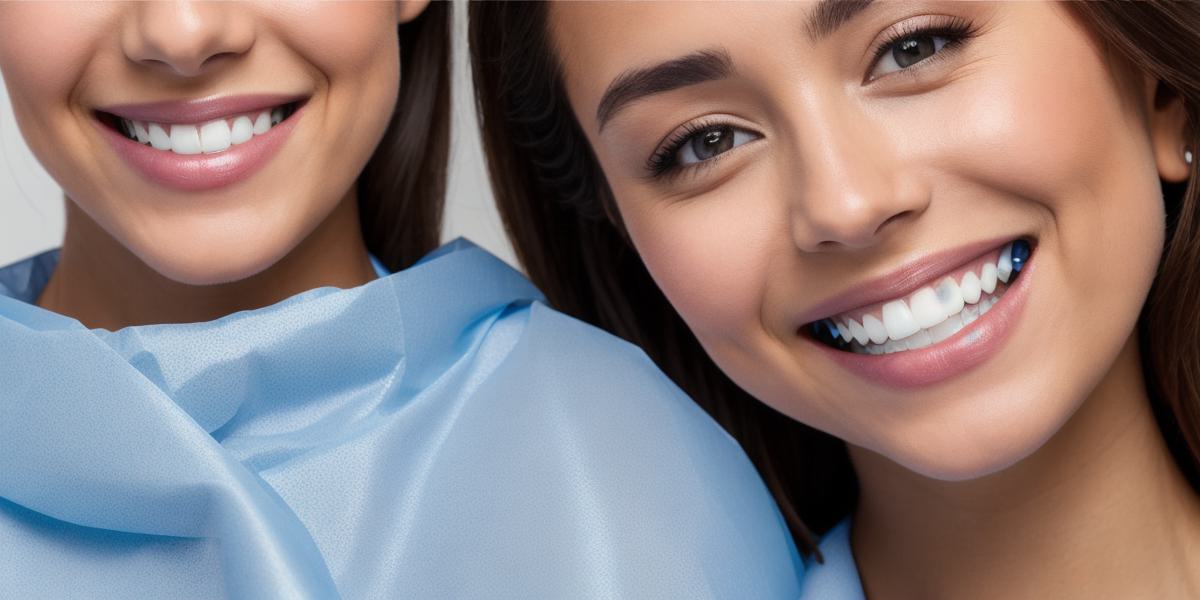Introduction:
Orthodontics is a popular treatment for crooked teeth, and many people have undergone this procedure at some point in their lives. However, it’s important to note that braces can also increase the risk of developing gum disease. In this article, we will explore the link between braces and gingivitis and provide practical tips to help you maintain good oral health while undergoing orthodontic treatment.
What are Braces?
Braces are appliances that straighten teeth by applying pressure on them. They consist of a series of metal wires attached to dental brackets that hold the wires in place. Braces can be used to correct various types of malocclusions, including overbite, underbite, crossbite, and open bite.
How do Braces Affect Gingivitis?
When teeth are straightened with braces, they may become more difficult to clean properly. This is because the wires and brackets can create crevices and grooves where plaque and bacteria can collect, leading to inflammation of the gums. In some cases, this inflammation can progress to a full-blown infection, resulting in periodontitis.
According to Dr. David J. Sands, an orthodontist at the University of Florida College of Dentistry, “Wearing braces can create new surfaces that are more difficult to clean properly, and these surfaces may attract plaque and bacteria.” He also notes that people who wear braces may be more prone to gum inflammation due to increased saliva production and changes in the mouth’s microbial balance.
Case Studies:
One study published in the journal Dental Research Express found that people wearing braces were more likely to develop gingivitis than those who did not wear them. The study followed 400 patients over a six-month period, and those who wore braces had a significantly higher incidence of gum inflammation compared to those who did not.
Another case study involved a 16-year-old girl who developed severe gingivitis while wearing braces. The girl’s dentist recommended that she undergo regular dental cleanings and use an electric toothbrush with a fluoride toothpaste to help combat the gum inflammation.
Practical Tips for Maintaining Good Oral Health with Braces:
To reduce your risk of developing gingivitis while wearing braces, it’s important to maintain good oral hygiene practices. Here are some practical tips:

- Brush and Floss Daily: Brush and floss daily to remove plaque and bacteria from between the teeth and around the gum line. Use a fluoride toothpaste to help strengthen your teeth’ enamel and reduce your risk of decay.
- Use an Electric Toothbrush: Electric toothbrushes are highly effective at removing plaque and debris from hard-to-reach areas. They can also help reduce the amount of time you need to spend brushing your teeth, making it easier to maintain good oral hygiene while wearing braces.
- Rinse with Water or Mouthwash: After brushing and flossing, rinse with water or mouthwash to remove any remaining plaque or debris.
- Visit Your Dentist Regularly: Regular dental checkups and cleanings are crucial for maintaining good oral health while wearing braces. Your dentist can help you develop a personalized cleaning routine that works for your specific needs.
- Avoid Sugary Snacks and Drinks: Sugary snacks and drinks can increase your risk of developing cavities and gum disease, so it’s important to limit them while wearing braces. Instead, opt for healthy snacks like fruits, vegetables, nuts, and low-fat dairy products.
- Consider Using a Waterpik: A waterpik is a powerful tool that uses water under high pressure to clean teeth and gums. It can be especially helpful for people with braces who have difficulty reaching all areas of their mouth.
- Use Floss Threaders: Floss threaders are tools that make it easier to floss around braces. They can help remove food particles and plaque that may be stuck in the crevices between the teeth and under the brackets.
- Maintain Good Oral Hygiene Habits: It’s important to maintain good oral hygiene habits even after you have your braces removed. Regular checkups with your dentist can help you catch any potential issues early and keep your smile healthy and beautiful.
Conclusion:
While wearing braces is an effective way to correct crooked teeth, it’s important to be aware of the potential risks associated with this treatment. Gingivitis is a common complication of wearing braces, but it can be prevented with proper oral hygiene practices. By following these practical tips and visiting your dentist regularly, you can minimize your risk of gum disease while undergoing orthodontic treatment. So, if you’re considering braces, rest assured that with proper care, you can maintain good oral health and a beautiful smile.



